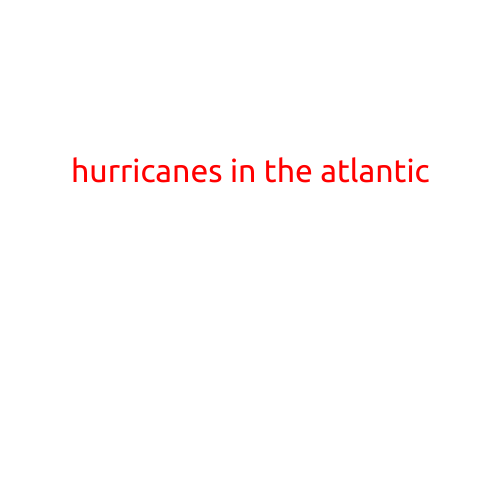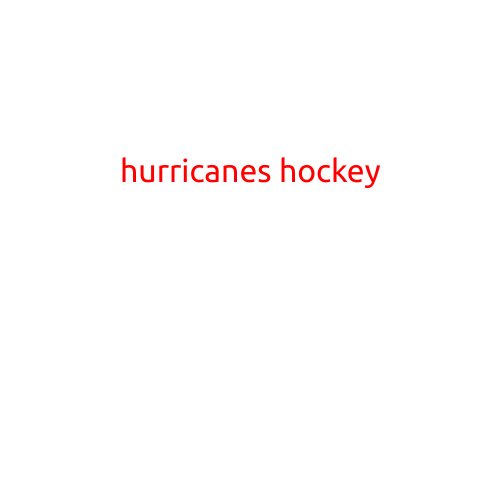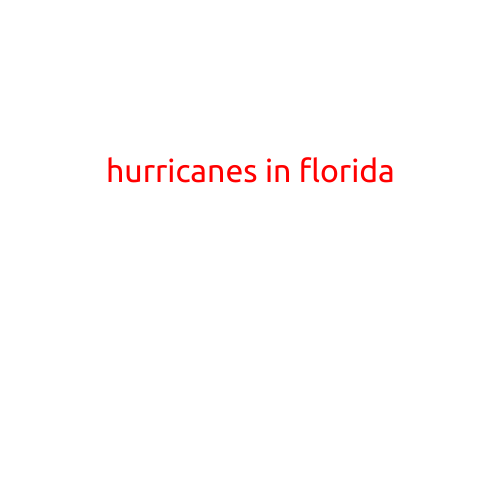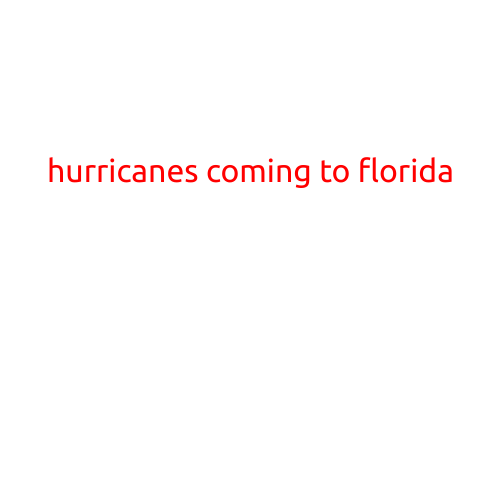
Hurricanes in the Atlantic: A Powerful Force of Nature
The Atlantic Ocean, which stretches from the western coast of Europe to the eastern coast of the United States, is a breeding ground for powerful and destructive storms known as hurricanes. These tropical cyclones form over warm ocean waters and can bring devastating winds, heavy rainfall, and storm surges that threaten the lives and livelihoods of millions of people.
What are Hurricanes?
A hurricane is a type of tropical cyclone that forms over warm ocean waters in the Atlantic, Caribbean, and Gulf of Mexico. Also known as tropical storms or typhoons, hurricanes are fueled by the warmth and moisture of the ocean, which causes the air to rise and create low-pressure systems. As the air rises, it cools, and water vapor condenses, forming clouds and releasing heat, which in turn fuels the storm.
The Formation Process
The formation of a hurricane is a complex process that depends on several factors, including:
- Warm ocean waters: Hurricanes need warm ocean waters (at least 80°F or 27°C) to form and sustain themselves.
- Moisture: Hurricanes also need high levels of atmospheric moisture to form and intensify.
- Low pressure: Hurricanes form when a low-pressure system develops over the warm ocean waters.
- Wind shear: Hurricanes need low wind shear (a change in wind direction and speed) to form and maintain their structure.
Atlantic Hurricane Season
In the Atlantic, the hurricane season typically runs from June 1 to November 30, with peak activity occurring between mid-August and late October. During this time, the Atlantic Ocean is at its warmest, and the atmospheric conditions are most favorable for hurricane formation.
Hurricane Categories
Hurricanes are classified according to their wind speed, using a scale known as the Saffir-Simpson Hurricane Wind Scale. The categories range from 1 (minimal damage) to 5 (catastrophic damage):
- Category 1: Winds of 74-95 mph (64-82 kt, 119-153 km/h)
- Category 2: Winds of 96-110 mph (83-95 kt, 154-177 km/h)
- Category 3: Winds of 111-129 mph (96-112 kt, 178-208 km/h)
- Category 4: Winds of 130-156 mph (113-136 kt, 209-257 km/h)
- Category 5: Winds of 157 mph or higher (137 kt or higher, 258 km/h or higher)
Impacts of Hurricanes
Hurricanes can cause devastating impacts, including:
- Storm surge: A rise in sea level due to the storm, which can cause flooding and damage to coastal areas.
- Winds: Strong winds can cause damage to buildings, trees, and power lines.
- Rainfall: Heavy rainfall can cause flooding, landslides, and flash flooding.
- Tornadoes: Tornadoes can form in the outer rain bands of a hurricane.
Consequences of Hurricanes
Hurricanes have significant consequences for coastal communities, including:
- Economic losses: Hurricanes can cause significant economic losses due to damage to infrastructure, businesses, and agriculture.
- Human impact: Hurricanes can cause loss of life, displacement, and trauma to affected communities.
- Environmental impact: Hurricanes can cause damage to ecosystems, including mangroves, coral reefs, and wildlife habitats.
Conclusion
Hurricanes are powerful forces of nature that can bring devastating impacts to coastal communities. Understanding the formation process, categories, and consequences of hurricanes is crucial for preparedness and mitigation. As climate change continues to influence hurricane patterns, it is essential to stay informed and take proactive measures to reduce the risks associated with these storms.





